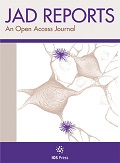Authors: Brownell, Malcolm | Sehar, Ujala | Mukherjee, Upasana | Reddy, P. Hemachandra
Article Type:
Review Article
Abstract:
Dementia is a major health concern in society, particularly in the aging population. It is alarmingly increasing in ethnic minorities such as Native Americans, African Americans, Hispanics/Latinos, and to some extent Asians. With increasing comorbidities of dementia such as diabetes, obesity, and hypertension, dementia rates are expected to increase in the next decade and beyond. Understanding and treating dementia, as well as determining how to prevent it, has become a healthcare priority across the globe for all races and genders. Awareness about dementia and its consequences such as healthcare costs, and caregiver burden are immediate needs to be addressed. Therefore,
…it is high time for all of us to create awareness about dementia in society, particularly among Hispanics/Latinos, Native Americans, and African Americans. In the current article, we discuss the status of dementia, cultural, and racial impacts on dementia diagnosis and care, particularly in Hispanic populations, and possible steps to increase dementia awareness. We also discussed factors that need to be paid attention to, including, cultural & language barriers, low socioeconomic status, limited knowledge/education, religious/spiritual beliefs and not accepting modern medicine/healthcare facilities. Our article also covers both mental & physical health issues of caregivers who are living with patients with dementia, Alzheimer’s disease, and Alzheimer’s disease-related dementias. Most importantly, we discussed possible measures to create awareness about dementia, including empowering community advocacy, promoting healthy lifestyle choices, education on the impact of nutrition, encouraging community participation, and continued collaboration and evaluation of the success of dementia awareness.
Show more
Keywords: Alzheimer’s disease, community participation, comorbidities, dementia, healthy brain aging, Hispanics, lifestyle choices
DOI: 10.3233/ADR-240043
Citation: Journal of Alzheimer's Disease Reports,
vol. 8, no. 1, pp. 747-764, 2024





